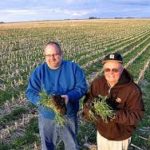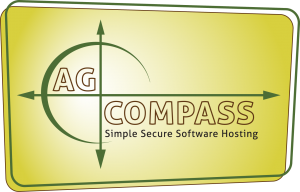Contact Us to learn more about our services.
Better Decisions Without The Wait – How To Use In-Season Data For Crops
6 steps to use in-season data and improve your bottom line: better decisions without the wait.
As a modern farmer, you know how important it is to analyze your long-term field and crop trends. But don’t have to wait to accumulate years of data to make better decisions for your business. With real-time data, you can get day by day information about what your crops need, taking into account changing variables like rainfall, temperature and plant health. Ready to take your data analysis to the next level? Read our tips for in-season decisions.

Gather all the info you can
The more information you have, the better decisions you can make about your fields. You’ll want to track everything you can about your fields, including what you’ve applied, rainfall and irrigation amounts, Growing Degree Days, results from soil tests, and more. Keep in mind that you can get some information from sensors in your fields, or remote imagery of your fields from drones or satellites. Meanwhile, outside of the field, it’s important to track financial information like fluctuating market prices, so you can find the best time to sell.
It’s important to continue to update this information throughout the season. If you do long-term data analysis, you may currently wait to add all your information until the season is done. But by collecting your field data continually, you’ll be able to make in-season decisions based on current data that save you time and money.
Put it all in one spot
You can track all this information yourself in spreadsheets, but most people benefit from choosing a software that helps them keep track of (and more importantly, analyze) all this information. No matter how you track that information, it’s crucial to keep accurate and extensive records. Without the right information, even the most powerful software won’t be able to do you much good. If multiple people are adding information to your system, make sure you are using the same units, recording the same events, and are all on the same page.
Turn your data into information you can use
A spreadsheet full of numbers isn’t going to tell you how much water to apply this week by itself. Data is raw material that is analyzed to produce information that you can act on. While software can help with the number crunching and tracking over time, only you can know what information you need to make your operations more efficient. Especially as you begin using in-season data, it can be helpful to work with an expert to make sure you’re turning your data into the right information.
Once you begin to distill information from your data, you can make dialed-in decisions about applications and irrigation, if, when and how much. For example, if you have a field that’s in trouble, your software could help you identify when to water, reseed, or apply pesticides to get the best yield for that crop. By being more precise about your field decisions, you’ll save yourself machinery wear and tear, money on inputs, and time.
Computer data plus human intelligence
A spreadsheet doesn’t replace intuition. It’s important to review all your data in relation to your experience and to balance analysis with judgement when making decisions about your crops. Farmers who are most successful using data analysis in their operations find the middle ground between trusting their gut and trusting the spreadsheets. Often, you need to use both to make the best decisions. When you use data from your current season, you’re ensuring you’re not making those decisions with old information.
Take your data with you as you work
During the season, you don’t want to spend time sitting at a desk with a computer in front of you. When you’re running a busy operation, you need to make decisions quickly, wherever you are. With the help of IT solutions like AgCompass, you can access your business software anywhere you have an internet connection, and securely share information with other employees or consultants.
Do it all over again next year
In-season data analysis for your fields is designed to complement a long-term management program. As a farmer, you need to juggle both short and long term decisions. When you track your fields through a season and through the years, you’re giving yourself all the right information you need to make more efficient choices now and later.

